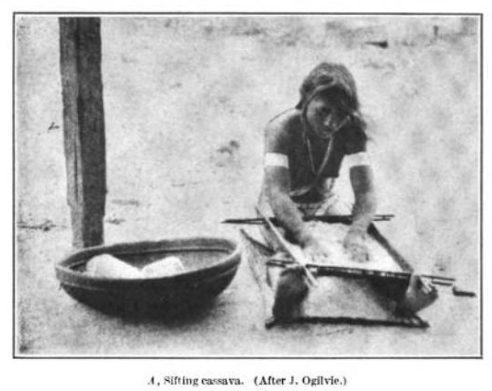Kalina Basket Sifter

This basket sifter is from Pikin Saron, an indigenous Kalina village in the north-central part of Suriname. The Kalina are also known as Carib or mainland Carib, but they call themselves Kalina. They live in several countries along the northern coast of South America, with a population of about 3,000 in Suriname.
Square baskets like this one, loosely woven of palm fibers with a wooden frame, are important domestic utensils used in processing cassava flour. Cassava (also known as manioc) is a starchy root vegetable and staple food source native to South America. It has spread widely and is now an important crop in tropical regions around the world.
To make cassava bread, the root is first grated, and the pulp is pressed to remove the juice. The pulp is then dried and passed through a basket sifter like this one to remove lumps and make the flour of equal fineness. The flour is then used to create a flat bread similar to a tortilla that is cooked on a large griddle.
Baskets like this one can also be used as a sieve in making kasiri, a cassava beer. Grated cassava is mixed with water and pressed into the basket to extract the liquid, which is then fermented. For the Kalina, kasiri is an important part of celebrations and is often given to visitors as a sign of hospitality.


